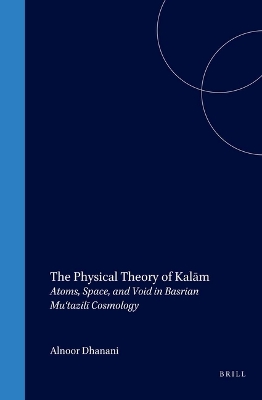Islamic Philosophy, Theology and Science. Texts and Studies
1 primary work
Book 14
This book reconstructs the theories of matter and space of the mutakallimun of the tenth and eleventh centuries A.D. It uses texts which have only recently become available.
The book presents material which challenges our previous understanding of kalam atomism. In particular, it analyzes the concept of atoms as a 'space-occupying object' without dimension yet having magnitude. It examines the manner of the atom's occupation of space, and discusses arguments for and against unoccupied spaces or the void.
A detailed examination of the paradoxical nature of such an atom follows. The argument is made that a 'discrete' rather than a 'continuous' conception of space, matter, time, motion and indeed geometry underlies kalam physical theory. In this respect, the kalam atom is similar to the Epicurean minimal part.
The book presents material which challenges our previous understanding of kalam atomism. In particular, it analyzes the concept of atoms as a 'space-occupying object' without dimension yet having magnitude. It examines the manner of the atom's occupation of space, and discusses arguments for and against unoccupied spaces or the void.
A detailed examination of the paradoxical nature of such an atom follows. The argument is made that a 'discrete' rather than a 'continuous' conception of space, matter, time, motion and indeed geometry underlies kalam physical theory. In this respect, the kalam atom is similar to the Epicurean minimal part.
